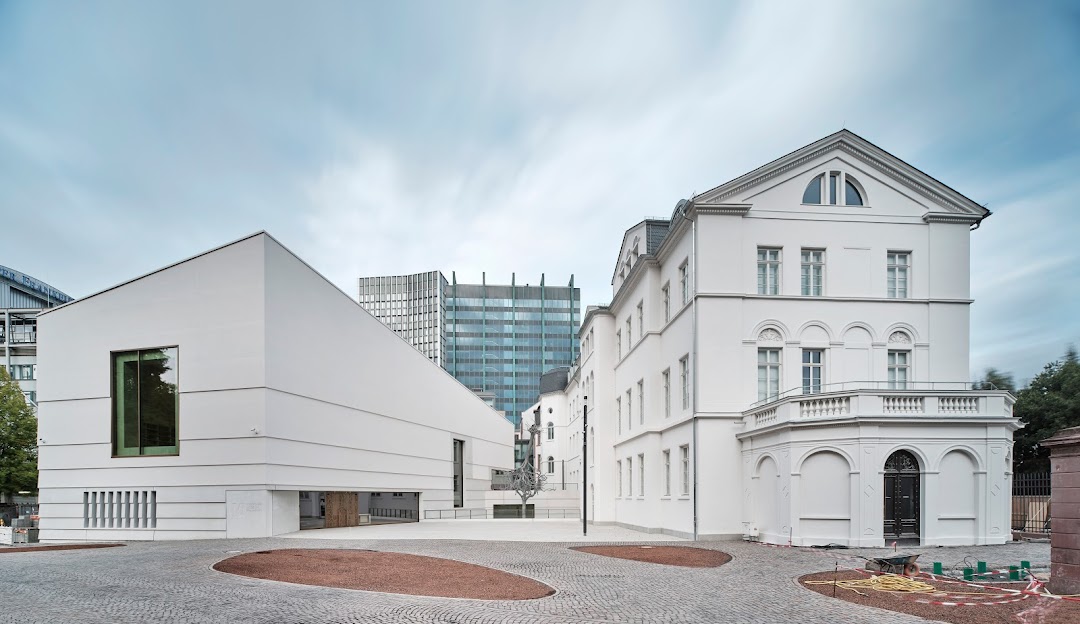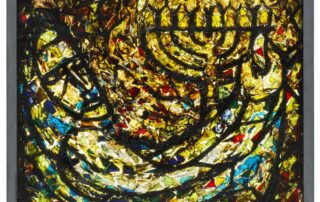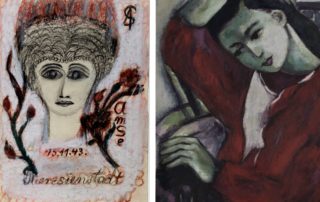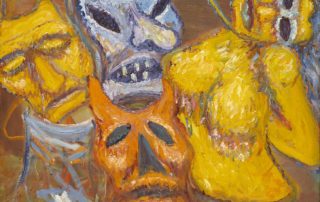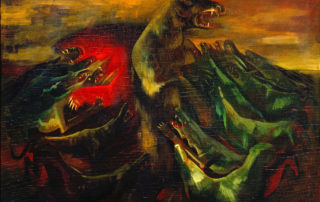Rachel Stern2024-11-24T14:39:31-05:00October 28th, 2024|Events, Lectures, Past Events|
Der Maler, Grafiker und Dichter Fritz Ascher (1893-1970) wurde bereits als 16-Jähriger von Max Liebermann an die Akademie in Königsberg empfohlen. Ab 1913 gehörte er zu den gefragten Malern in Berlin. Er war ein genauer Beobachter seiner Zeit; die Urkatastrophe des Ersten Weltkriegs und die revolutionären Unruhen in Berlin führten ihn zu christlichen und mystischen Themen, die er radikal neu interpretierte. Nach 1933 erhielt Ascher als Jude Berufsverbot. Während der Pogrome am 9./10. November 1938 wurde er verhaftet und im Konzentrationslager Sachsenhausen und im Potsdamer Gestapo-Gefängnis interniert. Die Schoa überlebte er ab 1942 versteckt in einem Keller in Berlin-Grunewald. Während dieser einsamen Jahre verfasste er Gedichte. Als Künstler fand Ascher nach 1945 seinen ganz eigenen Stil. Angeregt vom nahe [...]
Rachel Stern2023-12-15T11:28:36-05:00August 23rd, 2023|Events, Lectures, Past Events|
This event is sponsored by Ilona Oltuski in memory of Ruth Drory. Image above: Samson Schames, Kindling of the Lights, c. 1956. Glass tiles on glass, 56 x 71 cm. Jewish Museum Frankfurt Samson Schames (1898-1967) came from a long-established Jewish family in Frankfurt am Main. With the support of his uncle, renowned gallery owner Ludwig Schames, he made his way into the 1920s art scene and began his training as a painter, graphic artist, and stage designer. Schames’ designs, drawings, and oil paintings from the period up to 1933 testify to his deep connection to Frankfurt and her landscapes. Samson Schames, Opernplatz Frankfurt, 1930. Jewish Museum Frankfurt [...]
Rachel Stern2023-02-26T09:25:37-05:00November 7th, 2022|Events, Lectures, Past Events|
Erna Pinner, Rosy Lilienfeld, Amalie Seckbach, and Ruth Cahn were among the first women artists in Frankfurt to enjoy professional success. Throughout the Roaring Twenties, these four Jewish women left their mark on Frankfurt’s art scene, published and exhibited internationally, cultivated a cosmopolitan lifestyle, and competed with their male colleagues. When the National Socialists seized power, their careers came to an abrupt end. From then on, they were persecuted as Jews and their works ostracized; later, after the end of World War II, they were largely forgotten. Now, “Back into the Light” is at long last bringing them back to the public eye. The departure point is an article by art historian Sascha Schwabacher, published May 1935 [...]
Rachel Stern2022-08-03T14:52:23-04:00May 19th, 2022|Events, Lectures, Past Events|
When Ludwig and Else Meidner met in 1925, he was already an established artist well-known for his so-called Apocalyptic Landscapes. Although Else started as Ludwig’s student, she developed a distinct independent style and he always praised her art as more refined than his own “coarse” works. As Else Meidner slowly gained recognition in Berlin art circles, her career was abruptly cut short by the Nazi-regime in 1933. She moved to Cologne with her husband in 1935; and they emigrated to England in 1939 only a few weeks before the war started. In London both lived largely unnoticed by the English art scene. But while Ludwig frustratedly returned to Germany, she decided to stay in England. Their complicated relationship developed from [...]
Rachel Stern2022-05-19T05:21:58-04:00April 25th, 2022|Events, Lectures, Past Events|
Between 1933 and 1945, the National Socialist regime controlled artistic work in Germany. Particularly artists who were persecuted based on their religion, race, or political views fled into exile due to threats from the government. But what happened to the artists who remained in the country? Isolation, lack of an audience, and limited exchange impacted the creativity of the individuals who were deprived of a basis for work and life under National Socialism. Their situation is often described in a generalized way as “ostracism” or “inner emigration.” In light of the multilayered and divergent personal circumstances, however, these terms fall short of the mark. Image above: Hans Grundig, Clash of the Bears and Wolves, 1938, Oil on plywood, 90,5 [...]


